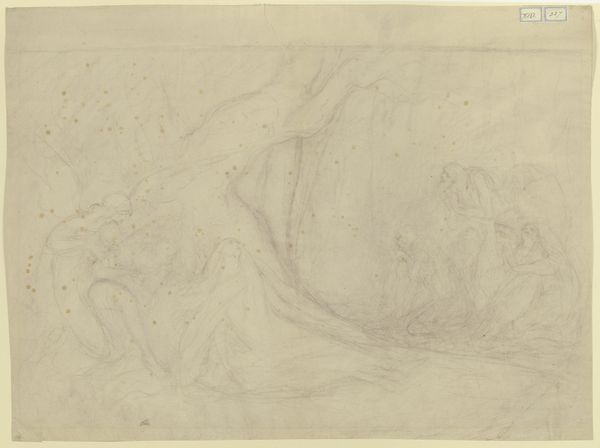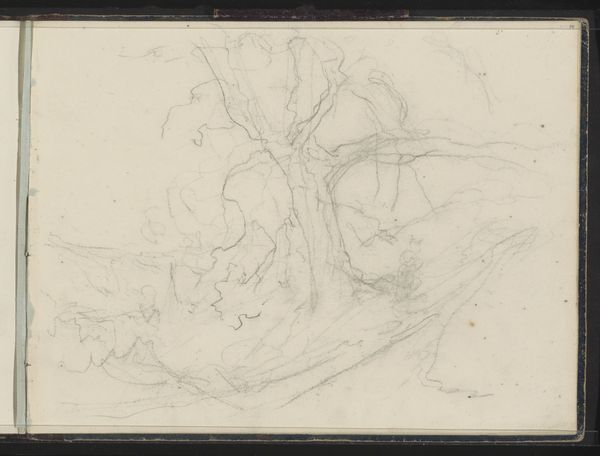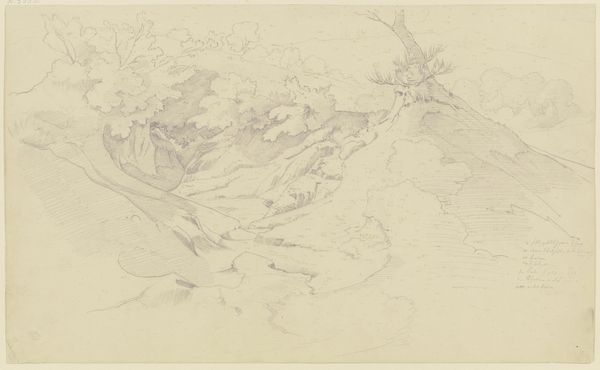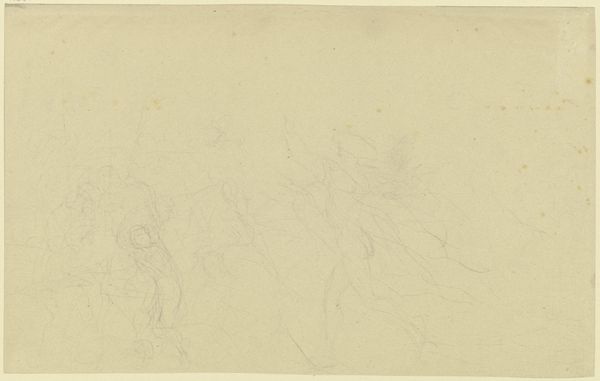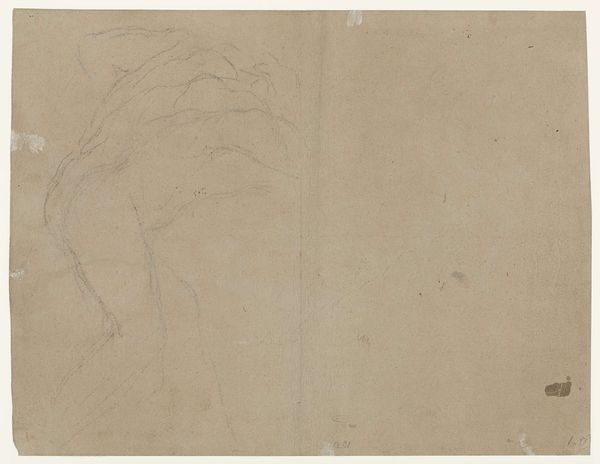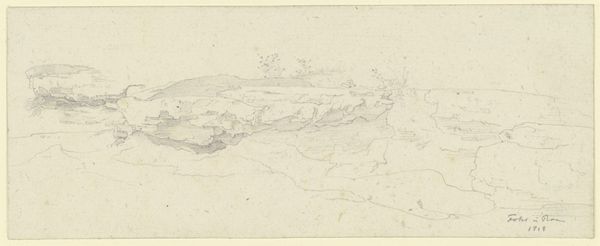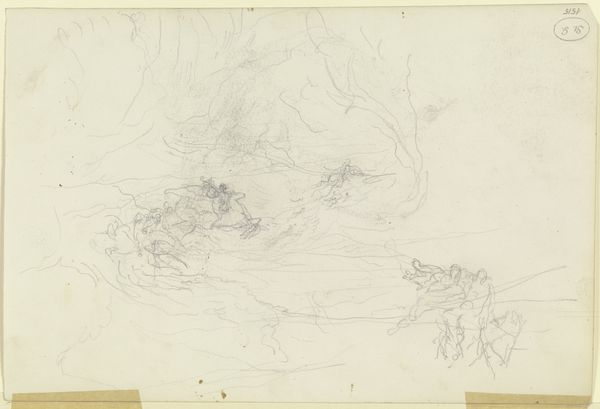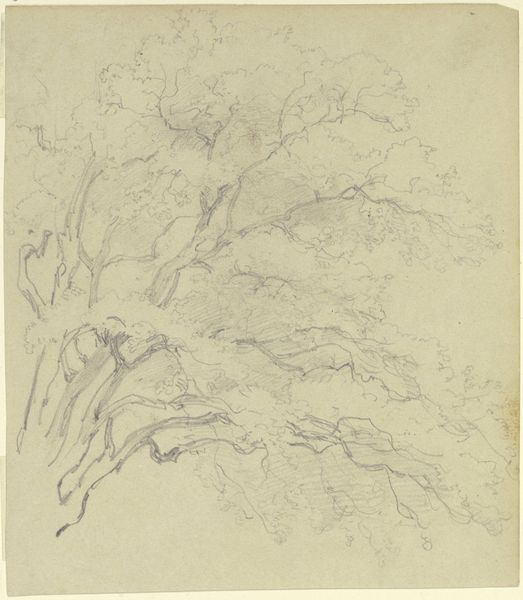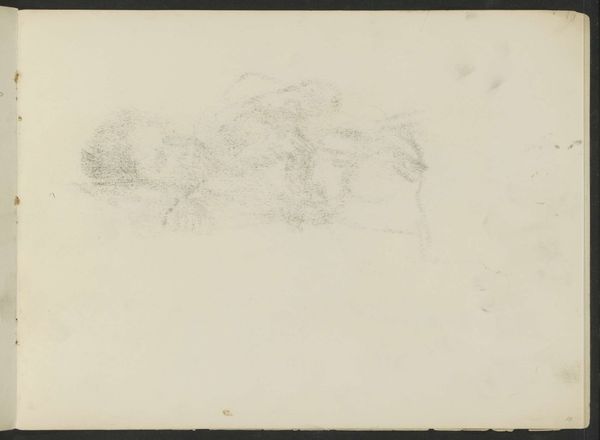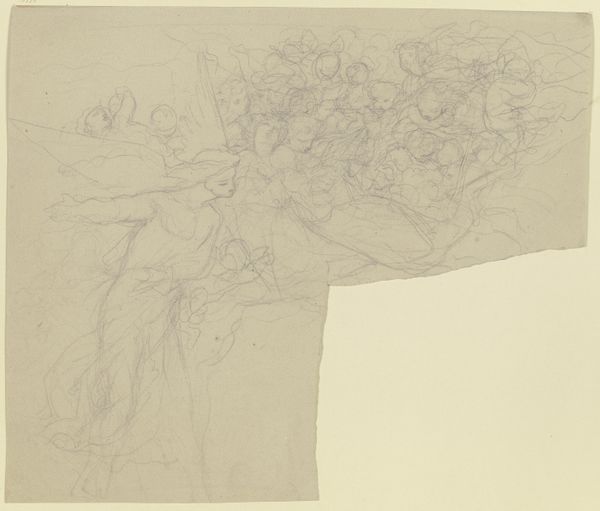
drawing, paper, pencil
#
drawing
#
landscape
#
etching
#
paper
#
romanticism
#
pencil
#
northern-renaissance
Copyright: Public Domain
August Lucas made this sketch, Hollow Path near Olevano, with graphite. It exemplifies the shift in the role of landscape art in the 19th century from background to foreground. Rather than being the setting for some moral or historical drama, the landscape itself takes center stage. Lucas made this work in Italy, which, by the 1830s, was a popular destination for Northern European artists. They often saw it as a refuge from the industrializing, urbanizing North, and a place where one could contemplate the glories of a pre-industrial past. You see Lucas doing just that here, recording the specific features of a particular site, Olevano, a town east of Rome. His close observation of the vegetation and geography speaks to the scientific spirit of the age. Historical research into travel patterns, and the art market, can tell us more about the appeal of landscape art in this period. By attending to the social and institutional context, we can better appreciate the work of artists such as August Lucas.
Comments
No comments
Be the first to comment and join the conversation on the ultimate creative platform.
